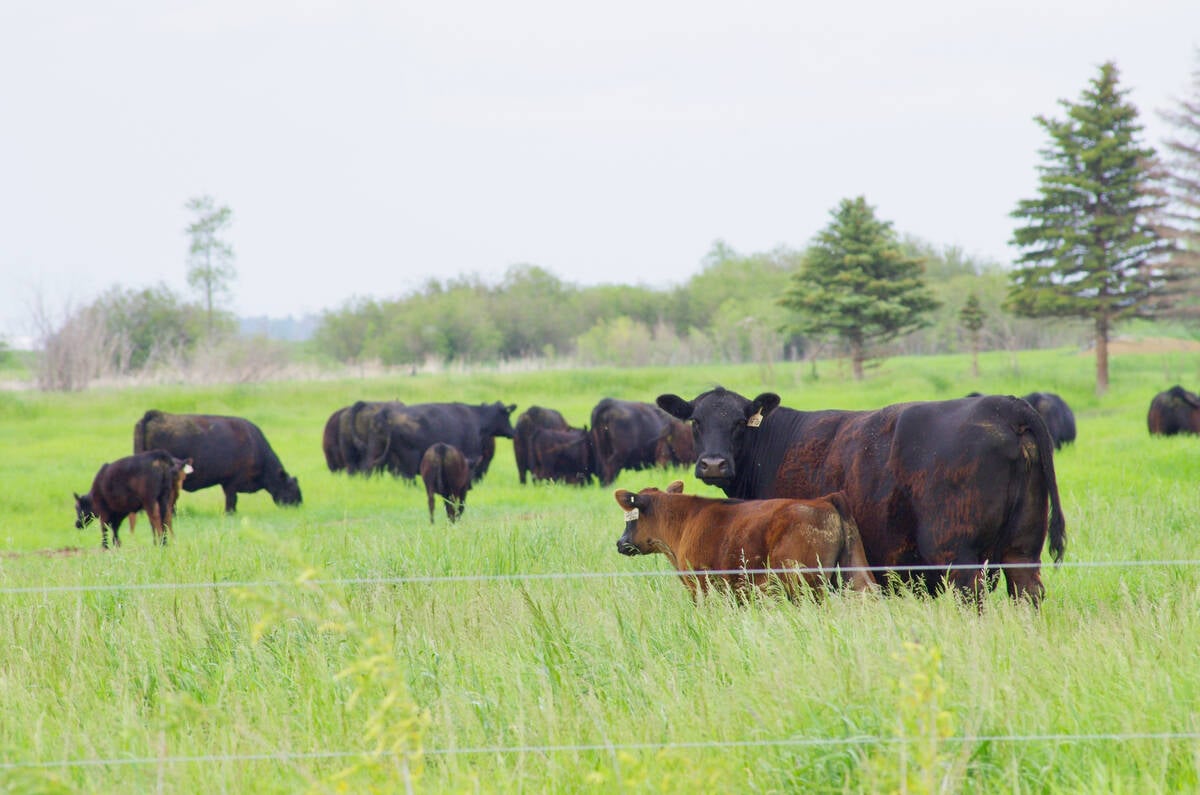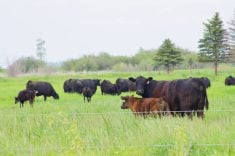RED DEER, Alta. – Oklahoma rhea farmer Ken Hoyt delivered words on the care of rheas that few in the industry have been willing to speak aloud.
He and his family own the largest rhea ranch in North America with more than 5,000 of the birds. Rather than selling or buying breeding stock, they make money in the volatile industry through value-added ventures like leather and cosmetics sales.
Rheas are flightless birds from the same family as the ostrich and emu.
Originally from South America, the birds stand between five and six feet tall and weigh about 75 pounds when they reach maturity.
Read Also

Tick research from the University of Manitoba focuses on insects and testing
Manitoba researchers are looking into the effects of tick and fly disease in cattle.
Leather has fine texture
Rhea meat is red and tastes similar to beef but has the same levels of cholesterol, protein and fat as chicken. The leather is finer in texture than ostrich. The fat yields oil used in cosmetics.
Hoyt holds a degree in animal science and has raised livestock all his life. Being the largest producer on the continent has not made him an expert on rheas.
“Being an animal scientist does not qualify you in the production of the rhea,” he said in an interview.
He has observed the rise and fall of this effort at diversification and is the first to admit he got involved because he wanted to get rich.
“Yeah, you can make money at it if you can find somebody to buy them birds,” he said with an Oklahoma drawl.
Unfortunately for many struggling producers, the feed bills started to mount and no one wanted to buy any new birds as breeders or for meat.
“All you wanted to do is raise birds and have somebody buy them. That is not the way to do it,” he said.
When he got started in 1987 there were not enough stock handlers involved and too many greedy speculators who knew nothing about farming or marketing. A lot of money was lost and the speculators backed away, he said.
The people who persevered will survive, he said.
When Hoyt got started he decided to pursue the meat market.
A supermarket chain in the United States agreed to take rhea meat but wanted a minimum of 40,000 lb. a week. Hoyt backed off because there weren’t enough birds on the continent to fill such an order.
Must make market
A slaughter bird yields about 25 pounds of meat.
He searched for alternatives and learned rhea oil is where the money is. He said with some extra work, it’s possible to make $850 in profit from these birds, providing everything including the hide, meat and oil is sold.
“It isn’t worth a cent on your farm unless you create a market for it. There has to be a desire for this stuff,” said Hoyt.
The cosmetics end is where Hoyt makes most of his profit.
Blending aloe vera and rhea oil, his company Hickory Hills Inc. manufactures odorless hand creams, hair conditioners and massage oils.
Besides cosmetics and processed meats, he sells wallets made from rhea leather and can get about 10 from a single hide. They retail for about $45 in the U.S.
Not a lot is known about rheas and many people buying into the industry quickly discovered there was no one to help them.
“The birds have a real good defence mechanism that covers up sickness. If you don’t catch it soon enough, you won’t notice until it’s damn near dead,” he said.
Breeding system
He breeds birds in a ratio of one rooster to 10 hens and sells the extra males for meat and oil. This ratio stops males from fighting for a limited number of females. His system also keeps track of which birds came from which parents to make genetic improvements.
Hoyt hatches his birds on one farm and then moves them in an all-in, all-out program to another farm 110 kilometres away. They live on pasture in large pens 360 metres long with water on one end and feed on the other so they have to run to build muscle. Then, 60 days before slaughter, they move into a feedlot for fattening.
To improve genetics Hoyt culls the hens, looking for those that produce the best birds, not the most eggs.
With so little known about rheas, often the genetic improvements can’t be detected until the bird is slaughtered, he said.

















